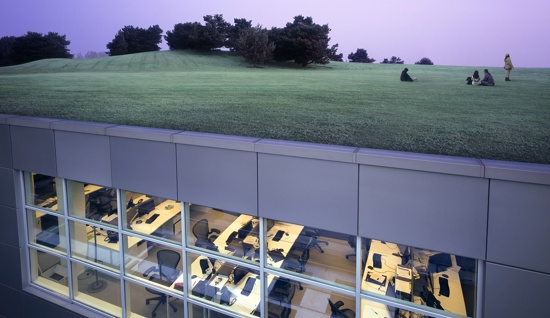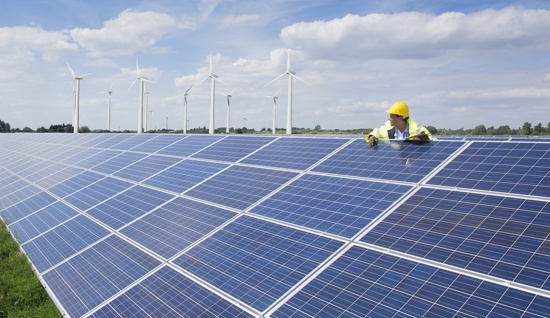
Climate emergency and air quality in a post-pandemic world
As part of Earth Day 2020 - the 50th anniversary of the movement, Dr Xiangyu Sheng, Director of Climate Change and Air Quality at GL Hearn, explores the need to plan now and focus on climate and ecology as fundamental components for success in a post-pandemic world as we move through the on-going Coronavirus (COVID-19) global pandemic.
For many of us now, our immediate attention turns to the on-going Coronavirus (COVID-19) pandemic and working through the immediacies of the challenges it presents us, both in our professional and our personal lives.
But, how do we find the time to steady ourselves and prepare to rebuild society? And, in doing so, how do we ensure we don't lose sight of the persisting climate emergency and ecologic crisis we face? Building the necessary momentum to fight the climate emergency battle must remain high on our agenda.
In the UK, the current lockdown has already seen a huge leap in air quality, with measurements of toxic pollutant down by as much as 60% in some major cities. This reduction will be temporary, and, once the pandemic is over, there is the risk of rebound Will the necessity of restoring the economy trigger a carbon emission peak? Now is the time for us to reflect and to take the time to think through our reactions in a post-pandemic world.
The COVID-19 pandemic highlights the tension between people and our natural ecosystem. We can think of this pandemic as an emergency health condition, for which all resources must be diverted in order to save lives. On the other hand, the climate crisis can be regarded as a chronic disease. One may be tempted to procrastinate, after all, it is a long-term issue. However, as all health practitioners will tell you, early intervention is key because chronic illness can quickly become acute.
We are continuing our work on climate change and air quality at GL Hearn and we continue to place health and wellbeing at the heart of our professional approach for colleagues, clients and the communities in which we work. We find ourselves thinking about a world beyond the immediate crisis. It is important that we rebuild our society in a way that protects planetary health and creates a resilient, sustainable and equitable zero-carbon future.
Planetary health
The pandemic is a 'crisis of our own making' according to many infectious disease and environmental health experts, and from those in planetary health - an emerging field connecting human health, civilisation and the natural ecosystems on which we depend. These fields might sound unrelated, but the COVID-19 pandemic and climate and biodiversity are deeply connected.
It is a warning siren for us that now, more than ever, we need to be aware of the relationship between ourselves and our planet. In order to understand and effectively respond to COVID-19 and other new infectious diseases that humans may encounter in the future, policymakers need to recognise and respond to problems with ‘planet awareness’. This means looking at all health; public health and the health of our natural environment.
Climate change destroys human health on a global scale, as well as making the ecosystem more fragile. It exacerbates existing health conditions in already vulnerable individuals, as well as negatively affecting the health of all who live on this planet. For infectious diseases such as COVID-19, air pollution will increase health risks. Because it is a respiratory disease, like SARS, exposure to air pollution will increase vulnerability and reduce human resistance. At time of writing, there is no proven, effective treatment that cures COVID-19. Much of the crucial work occurring in hospitals aims to reduce and alleviate symptoms of the virus so that the body can better focus on fighting the virus itself. People in polluted areas who already have compromised respiratory systems naturally struggle more in this fight. Air pollutants such as PM2.5, which are suspended particulates, can also be used as a carrier of pathogens, promoting the spread of viruses and infectious diseases over long distances.
Human health depends on an overall healthy ecosystem. When policies are made during urban development projects, this important factor is rarely considered. Projects include those in areas such as land planning, energy or transportation infrastructure. If we want to prevent new infections and the emergence of new pandemics in the future, we must stop over-exploiting nature and minimise carbon emissions. Therefore, in the long run, we must fundamentally solve the problem by protecting biodiversity and stabilising the climate, thereby minimizing the spread of diseases from animals to humans, as well as the impact these diseases have.
Interlinked green and blue spaces
One of the few places where activity has increased through the current lockdown is urban parks and open spaces while people can do daily exercise. A new approach to city planning should bring open spaces and parks into the heart of cities and a focus on access to core services.
A more holistic approach to planning that combines grey, green and blue infrastructure supports better health, better water management, better accessibility and climate adaptation and mitigation strategies. Furthermore, larger open spaces within the urban fabric can help cities implement emergency services and evacuation protocols. For example, in population dense cities such as London, without proper affordable housing provision with adequate public spaces can lead to problems. COVID-19 may prompt changes from temporary measures which make it more feasible for people to follow social distancing guidelines to more lasting changes. At GL Hearn, our Land Planning team assists our clients to achieve these vital goals.
Future building design
In addition to current WELL Building and BREAM standards, future building design will need enhanced standard. For example, considering how the internal environmental quality can be more virus proof using enhanced indoor air quality and ventilation systems, how to select fit out materials which offer maximum virus protection and how to manage our workspace segregation and rotation of use. As working from home become the new norm, how can we design and build workspaces that can accommodate social distancing requirements for the future?
Green opportunities: early action is essential
One of the main lessons from the current pandemic is that early action is essential. Therefore, we need to maintain ambition in order to mitigate the risks and costs of inaction from climate change and biodiversity losses. The crisis has reminded us that answers need to be found in a concerted manner through a common response. How can businesses de-risk after COVID-19?
I hope that for our industry there are real lessons which lead to opportunities following COVID-19, and the opportunity to embrace a brave new world post-pandemic. I hope we see much needed, and long overdue, upscaled investment in sustainable mobility, renewable energy, building renovations, research and innovation, and the recovery of biodiversity and the circular economy. Urgent action to protect biodiversity must be a part of our response to the global health and environmental crisis. It is the key to ensuring the long-term survival and well-being of our society. We see resilience is about interdependencies. Working with multidisciplinary teams at national as well as local level, in response to this crisis but also other long-term sustainability and zero-carbon challenges – we will empower our clients with more granular, regularly updated data analysis that can provide better evidence for decision-making.
- Share
In the UK, the lock down has already seen a huge leap in air quality, with measurements of toxic pollutant down by as much as 60% in some major cities.
You may also be interested in




